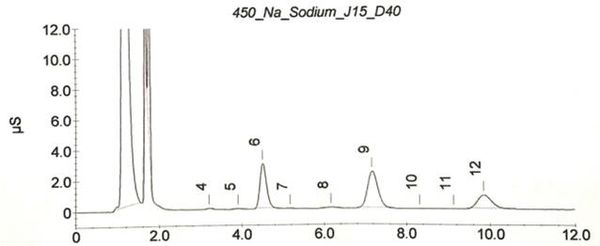Lactobacillus plantarum (L.plantarum) with capability of inhibiting kidney stone formation and application thereof
A technology of Lactobacillus plantarum and kidney stones, applied to Lactobacillus, bacteria used in food preparation, applications, etc., can solve the problems of questionable safety, unclear mechanism of action, and inquiries, etc., and achieves high safety and ease of use. Colonization, good growth effect
- Summary
- Abstract
- Description
- Claims
- Application Information
AI Technical Summary
Problems solved by technology
Method used
Image
Examples
Embodiment 1
[0041] Isolation, Screening and Molecular Biological Identification of Lactobacillus plantarum J-15
[0042] 1. Material preparation
[0043] Human feces samples were provided by a healthy person in Chengdu City, Sichuan Province;
[0044] The universal primer pair was synthesized by Sangon Bioengineering (Shanghai) Co., Ltd., and the 27F / 1492R sequence is as follows:
[0045] 27F: AGAGTTTGATCMTGGCTCAG
[0046] 1492R: TACGGYTACCTTGTTACGACTT
[0047] MRS liquid medium: glucose 20.0g, peptone 10.0g, beef extract 10.0g, yeast powder 6.0g, Tween 801.0mL, dipotassium hydrogen phosphate 2.0g, ammonium citrate 2.0g, sodium acetate 5.0g, magnesium sulfate 0.58g , manganese sulfate 0.25g, pure water 1L, pH 6.2 ± 0.2 (add 1.6%-1.8% agar for solid medium).
[0048] 2. Specific ways
[0049] Eligible healthy human stool samples. Weigh 1.0 g of the sample, and stir it quickly and fully in a centrifuge tube filled with 9 mL of sterile water to completely disperse the sample. Aspirate...
Embodiment 2
[0052] Detection of main physiological characteristics of Lactobacillus plantarum J-15
[0053] PBS buffer solution: Potassium dihydrogen phosphate 0.20g, disodium hydrogen phosphate 1.15g, sodium chloride 8.0g, potassium chloride 0.2g, add 800mL pure water and stir to dissolve, adjust concentrated hydrochloric acid to the corresponding pH value, and dilute to 1L.
[0054]1. Acid resistance test: the three-generation strain will be activated L. plantarum J-15 was inoculated into PBS buffer solution with pH 4.0, 3.0, and 2.0 with 1% inoculum amount, cultured at 37°C for 3 hours, and the number of viable lactic acid bacteria was determined by gradient dilution plate method.
[0055] 2. Bile salt resistance test: Inoculate the activated third-generation lactic acid bacteria into the MRS liquid medium containing 0.1%, 0.2%, and 0.3% bovine bile salt at an inoculation amount of 1%, respectively, culture at 37°C for 5 hours, and gradually dilute The plate method was used to determ...
Embodiment 3
[0060] In order to ascertain the oxalate degradation characteristics of J-15, the degradation ability of J-15 to sodium oxalate was tested in vitro. The other two strains of lactic acid bacteria y96 and y104 isolated from human feces were tested and compared together.
[0061] Oxalate degradation test: J-15 was inoculated in self-improved TM liquid medium containing 10mmol / L sodium oxalate concentration, cultured at 37°C for 9 days, and detected by ion chromatography (IC) on day 0 and On the 9th day, the oxalate ion concentration in the culture medium calculated the decomposition utilization rate of oxalate, and the ion chromatogram of oxalate concentration was as follows image 3 shown.
[0062] TM liquid medium: 2.0g dipotassium hydrogen phosphate, 2.0g sodium dihydrogen phosphate, 2.0g ammonium sulfate, 0.58g magnesium chloride, 0.25g manganese sulfate, 1L pure water
[0063] Degradation rate (%) = (1-A 1 / A 0 )×100%
[0064] In the formula: A 0 is the initial concent...
PUM
 Login to View More
Login to View More Abstract
Description
Claims
Application Information
 Login to View More
Login to View More - R&D
- Intellectual Property
- Life Sciences
- Materials
- Tech Scout
- Unparalleled Data Quality
- Higher Quality Content
- 60% Fewer Hallucinations
Browse by: Latest US Patents, China's latest patents, Technical Efficacy Thesaurus, Application Domain, Technology Topic, Popular Technical Reports.
© 2025 PatSnap. All rights reserved.Legal|Privacy policy|Modern Slavery Act Transparency Statement|Sitemap|About US| Contact US: help@patsnap.com



